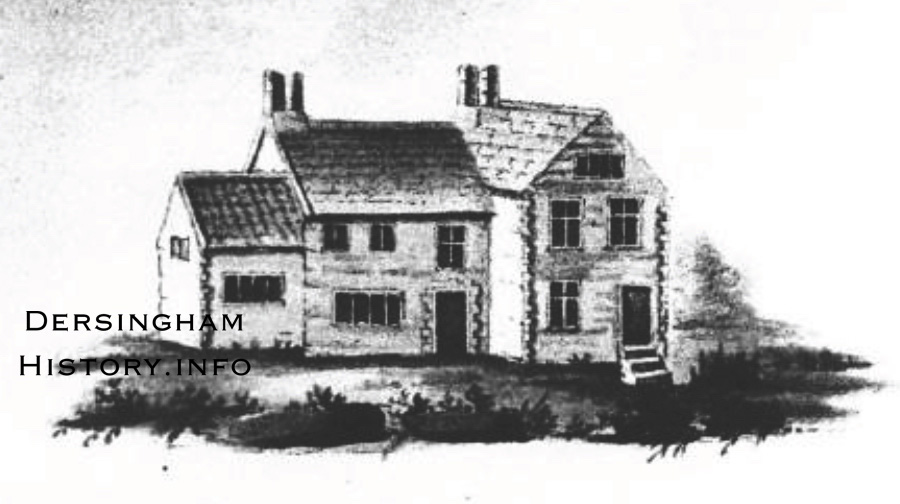In the late autumn of 1934 many villagers and children, would have gathered to watch as a gang of workmen began to demolish a pair of old carstone cottages. These cottages had stood for as long as even the oldest resident could remember close to the grand old chestnut tree in the playground of the village school. The last occupants, the Melton and Biggs families, had moved to other cottages, but no doubt they watched as their former homes were reduced to a pile of rubble. The best of the stones were then removed and used to build a wall around the land granted to the village by the King for an extension to the churchyard. The whole event was recorded in the local press on December 30th and Mr. Ken Martins recalled it in his interview for the millennium project. "There was a house in the school yard and they were pulling it down. Us boys had the job of wheeling the bricks and the rubble rather than doing our lessons. We used to volunteer for that.”
The school log book records a meeting in January 1935 when the school managers met Mr. Beck, the Sandringham Agent, to discuss plans for the schoolyard and garden. Later in the year it was noted, ”Since the last report the playground has been extended and about one-quarter acre of land acquired for the school garden. It is well planned to include flowers, fruit and vegetables. All the children take part in the gardening and much interesting handwork is done by the boys. Although the work is only in progress for just over a year the garden has already become an attractive place.” Doreen Asker remembered, “My brothers did a lot of gardening there. The garden was at the back, the raised piece up the hill. We used to grow marguerites. If you were good you were allowed to pick a bunch to take home.”
The garden and the extended playground were a great asset to the school but as is so often the case there is a downside to the march of progress. For, with the demolition of those old cottages, the village lost a tangible, visible link to its ancient history. The area around the school, The Feathers and Doddshill was all part of the Manor of Pakenham and the old cottages formed the Manor House that had been erected there at least 400 years earlier. Records reveal that in 1366 a considerable part of the Manor of Pakenham was conveyed to the Priory at Binham, which already had considerable assets in the village. Before 1425 the Manor had been in the possession of one William Adderton and his wife Joan. On his death in 1425 it passed to William's daughter Joan who was married to John Church of Bassingbourn. Later in 1488 during the reign of Henry VII Sir John Windham granted the Manor to John Fox and his wife Catherine for the use of their son John. In the 16th century William Rogers held the Manor and in 1553, the first year of the reign of Queen Mary, he willed at least a part of it to the poor of Norwich. It was about this time that the Pell family of Oldhall Manor built their new large house about where our surgery now stands. This replaced the old moated manor that stood in the pastures.
Exactly when Pakenham Manor House was built I have not yet discovered but it would have been around this time I believe. In a Poll Bill of 1692 a Thomas Rogers sen. and Thomas Rogers jnr. and his wife are recorded. Also the area around Parkhill is marked on some old maps as Mr. Rogers' Park. They may not be related to William but I would like to think that the family connection continued in the village.
In 1565 the Manor passed into the ownership of the Cobbes of Sandringham who were a leading Norfolk family. They were great friends with the Le Strange family in Hunstanton and feature regularly in the account books of Hunstanton Hall. They supplied the Le Strange's with sheep from Dersingham and often gave pheasant and woodcock to the family. The Cobbes were Roman Catholics and during the English Civil war William Cobbe became a Colonel in the King's army. He was with Sir Hamon Le Strange when he raised the King's Standard in King's Lynn in 1643. The town was besieged by Cromwell's troops and was soon forced to surrender. At the end of the war Colonel Cobbe's estates, which included Pakenham, were sequestrated and all his revenues appropriated for the use of the Commonwealth. In 1650 he begged for discharge and confessed his recusancy. Although his rights were restored in 1652 the family fortune never really recovered. His son Geoffrey inherited the estate in 1665 but it was sold to the Hoste family in 1686.


